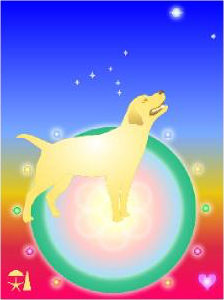 For the first time since childhood, I welcomed a wonderful dog into my life. Our precious collie Laddie died after being run over by a car when I was 10. When I saw the face of this beautiful dog who now shares our lives, I knew I had to save her. She was in a kill shelter just one day away from being put to sleep.
For the first time since childhood, I welcomed a wonderful dog into my life. Our precious collie Laddie died after being run over by a car when I was 10. When I saw the face of this beautiful dog who now shares our lives, I knew I had to save her. She was in a kill shelter just one day away from being put to sleep.
Training our dog has become a part of our lives each day, and, truth be told, it’s really more about changing ourselves. After three weeks of intensive training with a professional (Jason, a true “dog whisperer,” of Sgt. Rosco’s Boot Camp), our wonderful dog needed us to follow through with the approach she knew and embraced.
Although I knew a great deal about energy already, seeing how important it is to dog training and what a visible impact it makes is rather amazing to me. With dogs, it really is all about the energy and intention! Fellow Reiki practitioners, I know you understand what I mean. Here are a few of the things I’ve noticed in the process of dog training that relate to energy.
- Own the space around you. I’ve taught people about setting energetic boundaries and creating a field of protection for years, but oddly enough I never imagined I would be doing that with a dog. In order for our dog to feel safe in a strange environment or in the presence of unknown dogs or people, I have to create a safe space around us. I have to walk with calm confidence and a demeanor that relays that (shoulders down, chest up, grounded in stance). I also know well that dogs are able to pick up our telepathic images as well as our emotions, so I picture an orb of protective energy extending around us whenever we come into a challenging situation or energy. More than this, though, I have to claim the space. I must walk like I own whatever place I happen to be in, because in truth we have to hold our energy field—that space around us—as our own. In doing so, others are unable to encroach on our energy. This is not about being angry, territorial, or aggressive. It’s about being responsible for our own energetic welfare and realizing that we must maintain our sacred boundaries of personhood (and dog-hood). A pack leader is loving but always capable of creating and maintaining personal space.
- It’s not about shouting. The energy emanating from our beings does not have to be blaring in order to lead. There is a major difference between confidence and combativeness, between assertiveness and aggression. Shouting at a dog is entirely ineffective. We’re most likely to get barking in response. Dogs and people respond to self-assured, harmonious energy.
- Stay focused in the moment. We all know the mind can wander. But this is one of the most important things in the dog training process (and in life). If I take my attention away from the current environment, I am relinquishing my pack leader status, and the dog has to take the reins. When I pay attention and am focused where I am, we have a successful walk. In life, if we’re too busy giving our energy to the past or pondering the future, we give up the great gift of conscious co-creation with the Divine.
- Checking in is important. In order to successfully train a dog, we have to become self-aware. Are our energies remaining constant? Where are our thoughts and emotions? If I’m walking our dog and I start projecting my thoughts into the future—especially worrying about something—my entire demeanor changes. I start to slouch or raise my shoulders. The moment that happens, our dog starts pulling on her leash. She knows almost instantly when I’m not being pack leader and she quickly assumes the role. So I have to continue to check in on my inner self and maintain the composure I seek to create for her.
- Setting the stage allows for positive outcomes. Our trainer taught us that the success of our dog walk depends on our readiness before we step out the door. We don’t want to begin the walk in a state of overexcitement. We center ourselves, get grounded, make sure we’re feeling harmonious and confident; then we have our dog sit, make eye contact, and we set our intentions for a happy walk and project that to her. It’s interesting how much like preparing for a client session dog walking can be! What if we all did this before we went out into the world or began the workday? Getting centered and grounded, establishing our intentions, and checking in on our thoughts and emotions can go a long way toward having a successful workday.
No doubt I will continue to learn more about dog training as time passes and incorporate the wisdom of the dog world into my daily life. For now, I hope you enjoy these thoughts and benefit from them.
One last note to self: Barking never solves a problem.

lovely words Diana! Spot on, too! what a great job you are doing 🙂 congratulations! xoxo
Thank you, Karen! I greatly appreciate your kind words. (I only just saw this for some reason, or I would have replied much sooner.)
Wonderful reminders for every (dog) day. I often walk my neighbor’s dogs and will bring this wisdom on our walks. Now I’ll have a leash up!
Thank you, dear Denise! You’re a treasure.